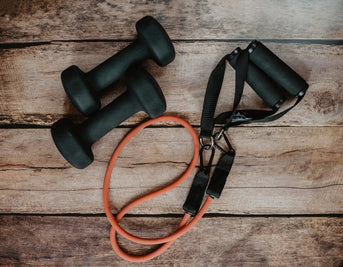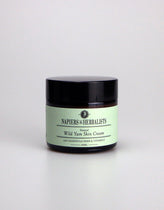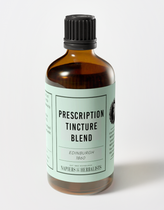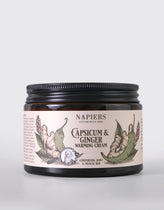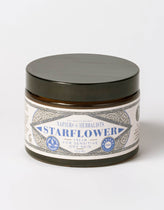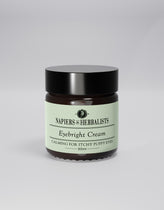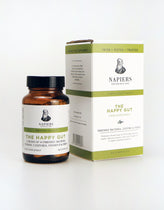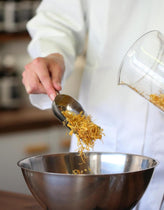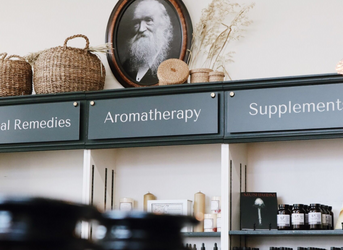Some of our customers want to know the comparative strength of a tincture versus dried herbs in a capsule. The most basic way of calculating strength is as follows, however, there are several caveats so please also read the notes below. For the examples we have used a sample 5ml as a dose of our most common extract strength 1:3 45%. This means that 1 part of herb is extracted in 3 parts of liquid which is made up of 45% alcohol (usually beet ethanol).
LIQUID TO DRIED HERB
You have 5ml of a 1:3 extract, what is the equivalent quantity of dry herb?”
X (dry herb quantity) = unknown
Y (extract quantity) = 5ml
Extract ratio: 1:3 (or 1/3)
Rule: Multiply the extract quantity by the extract ratio
5ml multiplied by 1/3 = 1.67g
Therefore the dose is 1.67g
DRIED HERB TO LIQUID
You have a 1:3 extract and want to give 3g of dried herb equivalent. What dose of the 1:3 extract should you use?”
X (dry herb quantity) = 3g
Y (extract quantity) = unknown
Extract ratio: 1:3 (or 1/3)
Rule: Divide dry weight by extract ratio
3g divided by 1/3 = 9ml
Therefore the dose is 9ml
HOWEVER
Historically, this is not an equation used by herbalists as the bioavailability of an alcohol extract is far higher than a powder or a capsule. Take for example turmeric, a common food supplement generally sold in doses of 500mg per capsule. If you were taking 2 capsules a day, i.e. 1 gram, then using the maths above you would need to take 3ml of tincture to be equivalent. However, if you look in a Chinese Materia Medica you will note that turmeric rhizome is used at doses of 3-10g powdered root equivalent to 1-4ml of a 1:3 25% tincture. (Or if the root as opposed to the rhizome 3-15g powdered root or 2-5ml of a 1:3 25% tincture.) So if you are one gram of turmeric rhizome, a third of the lower dose, the equivalent would be 1/3 of 1ml of tincture - about 7 drops. Two grams would be 2/3 of 1ml (14 drops) and three grams would be 1ml (20 drops). Personally, as a herbalist, I find that the guidance of classic texts borne out of hundreds of years of practice are more useful than maths on complex compounds!
The following other considerations should also be taken into account.
THIS DOES NOT EQUATE TO A SINGLE COMPOUND STRENGTH.
For example you cannot compare the compound artemisinin to a herb in the Artemisia family. The former is a single compound, the latter is a herb that contains many compounds including artemisinin. The herb will naturally contain lower amounts of a single compound than a drug will. This is because the complexity of the herb and the way that compounds interact with each to create the same effect. So it does not mean herbs are weaker if a single compound is weaker, often the herb will be as effective at a lower dose. For example, one of the Artemisia species tested as a whole herb tea for malaria in a clinical trial in East Africa, was found to work just as well as other species despite containing no artemisinin. Herbs commonly split their activity across multiple compounds thereby decreasing the likelihood of side effects.
ABSORPTION IN THE GUT
Liquids such as tinctures are absorbed very quickly and efficiently by the body. Capsules and tablets have to be broken down in the stomach and are assimilated in the intestines. Many tablets are made with the expectation that only 20% of the ingredients will be absorbed. Flavonoids from herbs are turned into medicinal compounds by the colonic bacteria and as the gut microbiome varies from person to person utilisation rates will vary. If your microbiome is disrupted so will your ability to absord certain herbs although other herbs can help to restore that balance.
GROWING AND HARVESTING
The soil and conditions that a plant is growing in changes its chemical balance. So does the time of year that is harvested, how long it is stored after harvest and a multitude of other factors.
WEIGHT AND SENSITIVITY
The idea that herbs, like drugs, can or even should be standardised always forgets one thing. That people cannot be standardised! Different body weights, metabolic rate, state of health, age and constitution will affect how much of a herb is needed by the body.
SYNERGISM
It has been proven scientifically, as well as in our clinical experience, that when herbs are combined in a blend together, that they act synergistically. This means that they potentiate, enhance or balance each other. This means that you could take much lower amounts of an individual herb when it is in the right blend, and it would work more effectively than taken at a higher strength on its own.
TRUST
If this all seems very confusing it is helpful to remember that trying to be this precise is a recent phenomenon. Humans have eaten plants and used them as medicines for hundreds of thousands of years. Our bodies are highly adapted to using plant nutrients and tend to take what they need from the plants. With the obvious exceptions of plants that have toxicity or extreme medicinal strength that constitutes an overdose, most people thrive on herbs without standardisation especially when advised by a qualified herbalist.
